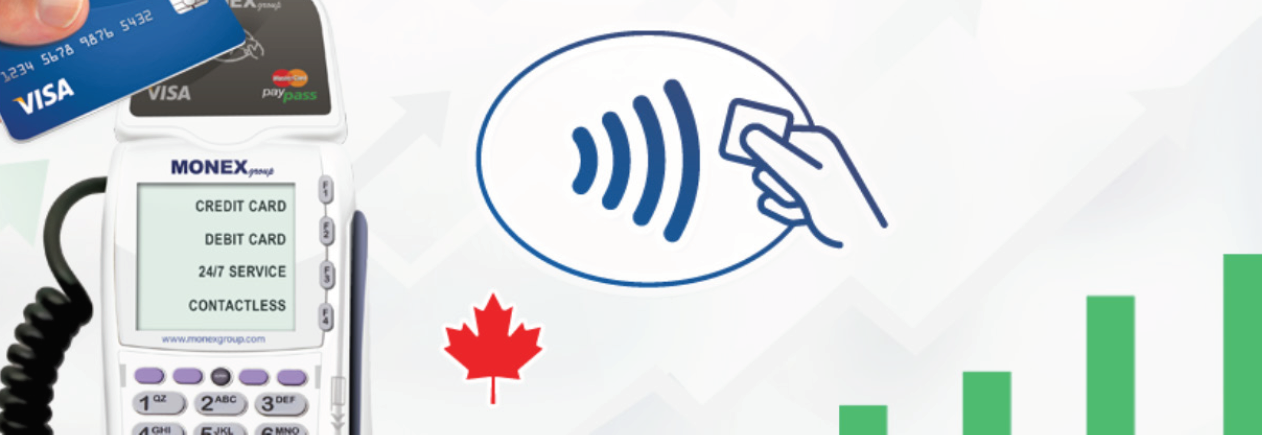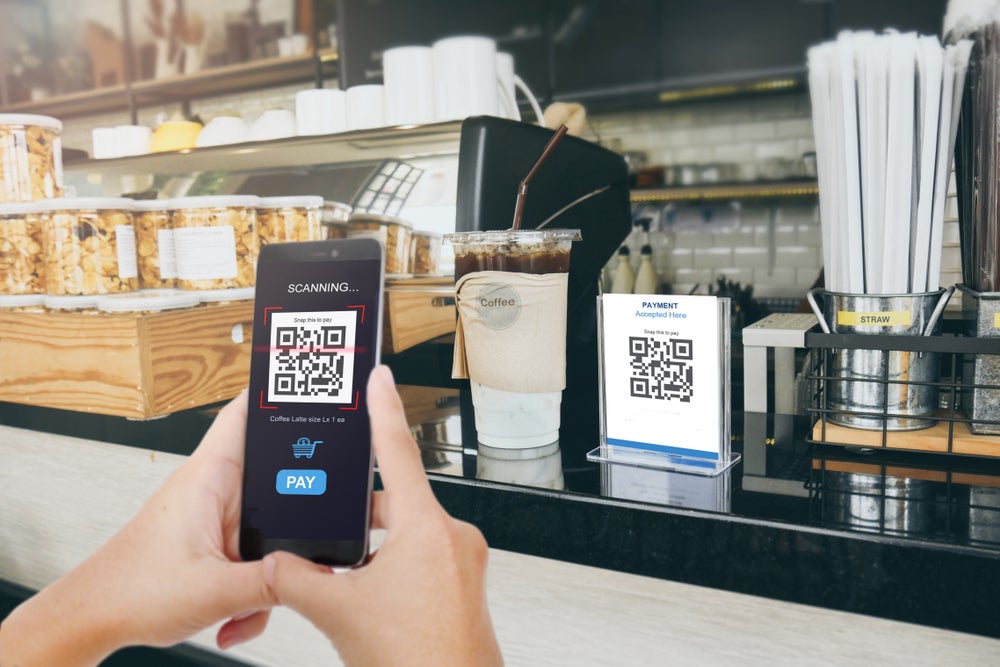
One of the few positive retail banking metrics to arise from North America during the pandemic is the rise in the use of contactless. And while the US continues to lag badly behind Canada, there are encouraging signs that contactless use is finally taking of, reports Douglas Blakey
Contactless payments continue their exponential growth in Canada making up a third of all point-of-sale transactions in 2019. A total of 4.7 billion contactless transactions worth C$156bn were made in Canada in 2019, according to Payments Canada’s annual report, released in mid-November.
That represents a 15% increase in volume and a 20% increase in value. This dramatic growth in contactless transactions has been fuelled by increasing consumer and merchant familiarity with contactless payments and the ability to pay with contactless cards.
The migration of contactless card payments to mobile phones is still evolving, but is likely to see a strong increase as more consumers become familiar with mobile contactless as an alternative to physical card payments.
Around 56% of Canadian consumers regularly tap their physical debit card to make payments, with younger generations (18-34) and those with higher incomes being more likely to use tap to make purchases.
Some 30% of debit card holders regularly tapped their mobile device to make a payment with a debit card, while 37% of credit card holders regularly tapped their mobile device to pay with their credit card.
How well do you really know your competitors?
Access the most comprehensive Company Profiles on the market, powered by GlobalData. Save hours of research. Gain competitive edge.

Thank you!
Your download email will arrive shortly
Not ready to buy yet? Download a free sample
We are confident about the unique quality of our Company Profiles. However, we want you to make the most beneficial decision for your business, so we offer a free sample that you can download by submitting the below form
By GlobalDataIn the US by contrast, the contactless card payments market has been slow to take off. According to Visa, 31 million contactless payments were made with Visa contactless cards or via digital wallets in March 2020 in the US.
That is up from 25 million in November 2019, with overall contactless usage in the US growing 150% since March 2019 and sounds encouraging until one notes that only three in ten Americans hold a contactless card.
Contactless US: 31% of consumers remain in ignorance
Only 17% of American adults hold a contactless card that they use for payments and still, a staggering 31% of consumers have never heard of contactless.
In Canada, the average debit contactless transaction is C$19, while the average credit contactless transaction spend is C$48. Payments Canada expect that the growing use of Apple Pay and Google Pay will boost mobile contactless payments.
And there is the potential offered by wearable technology. While there has been a lot of hype and over-enthusiastic forecasts about wearable technology, Canada did register growth in 2019.
In 2019, there were almost 14 million payment transactions made via wearables, more than twice the transactions made in 2018.
If mobile contactless is to fulfil its potential, there will need to be some obvious benefit demonstrated to use mobile wallets. Payments Canada suggests that a wider ability to store loyalty cards, coupons and store membership cards would help.
Cash: Canada 2019 highlights
Cash transaction volumes decreased by 9% from 2018, to represent 22% of the total POS payments volume in 2019 (in comparison to 39% in 2014).
Stating the obvious, the figures released by Payments Canada on 17 November predate the pandemic. The 2021 report in 12 months’ time will be eagerly awaited to determine the degree to which the pandemic accelerates cash displacement.
Despite its decline, cash is still a common payments method: 61% of Canadian consumers reported making a cash
purchase to a business in the past seven days. Notably, around 15% of Canadians use cash for more than half their transactions.
In the US, the share of cash within total payment volume declined from 23.7% in 2016 to 18.5% in 2020. GlobalData forecasts that cash use in the US will further reduce to 15.1% by 2024.
In contrast to the UK, where ATM numbers are in decline, the number of US ATMs increased from 470,135 in 2016 to 532,236 in 2020.
And looking ahead, GlobalData forecasts only a modest decline in the number of US ATM cash withdrawals of 5.2% per year over the period 2020-2024.
In Canada, the continued use of cash as a means of payment for employment remains a factor. Some 30% consumers who use cash on a regular basis receive at least some part of their monthly income or compensation for employment in cash or coins, which drives their likelihood to use cash for payments.
For example, 88% of those who received some part of their income in cash are Canadians aged 18-34, or had an annual income of less than C$59,000. Even though younger Canadians are more likely to use technology-based payments, they make up over a quarter of regular cash users.
Younger generations (18-24) often have lower incomes and a tendency to be underbanked, which can increase their
reliance on cash.
Prepaid: 2019 highlights
The use of prepaid cards in Canada has not quite matched optimistic forecasts made a decade ago as regards their potential to win market share.
But in 2019, prepaid cards, either plastic or virtual, grew at the POS (8% in volume and 6% in value). Nearly one in five Canadians either purchased or received at least one prepaid card per month.
Young consumers aged 18-34 and unbanked Canadians are the most common users of prepaid payments products. However, prepaid cards are starting to be used by a wider base, as those who seek security and anonymity for purchases have turned to prepaid cards as an alternative to cash.
Additionally, increasing concerns about fraud is linked to the rising use of prepaid cards, with prepaid card users almost twice as likely to have experienced some type of fraudulent financial activity.
According to Payments Canada, around 70% of Canadians are more concerned about fraud today than they were five years ago, which can drive more consumers towards prepaid cards to minimise the risks that come with sharing financial information online or using cards directly linked to banking accounts.
The use of prepaid cards has been accelerated by emerging e-commerce and mobile payments trends. Prepaid cards
accounted for 10% of e-commerce payments in 2019. Canadians were three times more likely to use a prepaid payment for e-commerce than they were at physical POS merchant locations.
The growing use of mobile payments also plays a significant role in accelerating prepaid card use.
In 2019, 80% of prepaid POS purchases were made using closed-loop store cards, with a notable amount of prepaid purchases being linked to mobile devices and virtual prepaid cards. Over a quarter of Canadians (28%) used at least one prepaid virtual card, with the most popular being Tim Hortons and Starbucks loyalty cards.
The use of prepaid cards at these establishments is directly linked with rewards and loyalty programmes that drive consumer usage.
In 2020, US prepaid statistics will be given a boost by the US government using prepaid cards to send stimulus payments to Americans under the Coronavirus Aid, Relief, and Economic Security Act.
For example, in May the Internal Revenue Service, the US tax collection and enforcement agency, announced it would send around four million American taxpayers their $1,200 stimulus using Visa prepaid cards.
Issued by the Treasury Department’s financial agent MetaBank, the prepaid cards were preloaded with the taxpayer’s allotted stimulus payment amount.
Despite the tendency for prepaid cards in the US to be marketed at the financially underserved, 38% of prepaid card holders used payment cards or bank accounts to reload their prepaid cards in 2018.
The US prepaid card market has developed to the point that some prepaid accounts now offer a genuine alternative to debit cards. Prepaid cards are often cheaper to hold than full bank accounts and offer many of the same benefits, as well as providing tools that allow consumers access to other cards in order to regulate and limit their spending.
2019: credit card versus debit card tipping point
In Canada, credit card transactions exceeded debit transactions in terms of volume and value for the first time in 2019.
This is mainly due to credit card rewards and the growth of e-commerce in Canada, where credit cards are the preferred method of payment.
In 2019, 78% of credit card holders have some type of reward associated with their card (most likely cashback or travel rewards). In 2019, the number of credit cards in circulation rose by 5% and 89% of Canadians reported having a credit card.
Relative to 2014, credit card volumes and values have grown 10% and 8% respectively. The average credit transaction in Canada last year was $90 at the POS.
Credit card transaction volumes increased by 16% from 2018, to represent 38% of the total POS payments volume (compared to 26% in 2014). In other markets, such as Australia, there are claims by the buy-now-pay-later sector that younger consumers are turned off credit card use for fear of getting into debt.
But in Canada, credit card use is consistent across age groups with over 80% per cent of all credit card holders using their cards regularly for purchases. While credit card usage is increasing, around 30% of Canadians carried a balance on their cards by the end of the month.
This indicates that credit cards might be used out of a need to access credit to cover expenses, rather than a preference for credit cards as a payment method.
Younger individuals and those making less than $40,000 annually were around 40% more likely to carry a balance on their credit cards.
The pandemic will again have a significant impact on the credit card sector in 2020. For example in the US, the coronavirus-induced recession results in credit card debt rapidly reducing.

2019 debit card highlights
Around 94% of Canadians hold a debit card, and debit cards increased over 3% in volume from 2018 to represent 37% of the total POS volume (compared to 33% in 2014).
Over the past five years, debit cards have been steadily increasing in terms of volume and value, though growing slowly relative to credit cards.
Debit and credit have similar shares in POS volume (37% and 38%, respectively), however debit value trails behind credit value at the POS (28% vs. 61%), indicating more frequent use of debit cards for low-value transactions. The average debit card transaction sits around $41 while the average credit card transaction is around $90.37.
In the US by contrast, consumers use their debit cards 158.6 times a year to make payments. The average transaction value is $39.21.
Co-badged debit cards are also being used extensively for e-commerce transactions in Canada. Around 58% of all debit cards in circulation are co-badged cards that integrate debit alongside Visa or Mastercard. In 2019, nearly 20% of e-commerce transactions in Canada were made using a co-badged debit payment.
In the US, Visa reports that the crisis is accelerating a drift from credit card purchases in favour of debit cards. Visa says that debit card payment volumes increased by 12% in May 2020 compared to May 2019.
Moreover, Visa says that its US credit card volumes declined by 21% in May 2020 year on year. The shift in consumer spending could drive away $100bn annually from credit cards to debit cards over time as per Visa. In May 2020, JPMorgan Chase revealed credit card spending fell by 40% during March and early April compared to 2019.
Looking ahead, the proliferation of new challenger banks can be expected to boost debit cards in circulation from an already high 1.5 cards per individual.
In 2020, GlobalData forecasts debit card payment frequency in the US at 158.6 transactions per card, in comparison to Sweden (279.8), Canada (207.6), France (194.0) and the UK (190.8).
In 2020, debit card payment turnover in the US is estimated at $6,217, compared to the UK ($8,574), France ($8,178), Sweden ($8,138) and Canada ($6,567).
Cheques remain alive and kicking
In Canada, consumer cheque use declined by nearly 6%, with corporate use of cheque declining 15% per cent from 2018. Even with declining use, the average cheque value increased by 5% to C$6,142 versus $4,030 in 2014, demonstrating that cheques remain an important payment option for large value payments.
EFT and cheque transactions together represent just over 15% of total transaction volumes and 87% of total payment value.
In 2019, 82% of all the cheque and paper items exchanged between Canadian financial institutions were images, and more consumers and businesses took advantage of digital deposit technology. In 2019, cheque and paper items remained significant in remote transactions, representing 39% of the total remote transaction value.
However, consumer use of cheques has dropped significantly, with a 24% decrease in volume and a 23% decrease in value, relative to 2018. Still, over a quarter of Canadians (30%) use cheques regularly, with older generations and hose with higher incomes significantly more likely to use cheques.
In the US, cheques still account for 6.4% of all transactions by volume and 13.9% by transaction value.
GlobalData forecasts that cheque use in the US will decline from 13.1 billion transactions in 2020 to 9.7 billion by 2020.
Meantime, EFT use in Canada continues to grow in 2019 with a 6% increase in value relative to 2018.
The steady increase in EFT and an accompanying decline in cheques could indicate that there are more Canadian consumers and businesses switching to electronic methods of payments for high value transactions.








